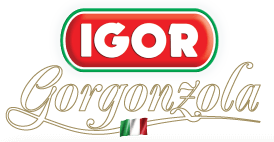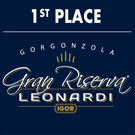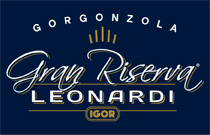
Nutrition advice from the Expert

ERASMO NEVIANI
- Full Professor of Food and Industrial Microbiology
- Scientific Advisor of the Italian Consortium of
- Gorgonzola cheese
- Gorgonzola cheese

GLUTEN AND LACTOSE FREE

"This condition is to be blamed on the lack or low expression levels of the enzymes responsible for the digestion of the lactose, the sugar that is found in milk and other dairy products. Among these, the lactase enzyme is the main catalyst of the hydrolysis of lactose into glucose and galactose,” Professor Mario Del Piano said.
“We should all consider that lactose is present in the breast milk as the sole carbohydrate nutrient in early childhood. In infants, therefore, lactase activity is obviously much higher because the milk is the main nutrient. However, in most post adolescent individuals this enzyme activity is downregulated reaching minimal levels in adults." Professor Del Piano said.
"A lot of people - said Professor Del Piano - suffer from the above mentioned disorders without knowing their cause, others are aware of their intolerance, but do not know which cheese they can eat".
"Gorgonzola, thanks to the three-step fermentation of its milk: lactic acid-, yeast- and then mold-driven fermentation, it is therefore recommended to all those individuals who despite having lactose intolerance do not want to give up eating a good cheese. "
GORGONZOLA. AN ITALIAN STORY.
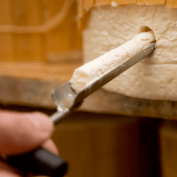
At that time no branch of learning could explain how that was possible, and for this reason, until the beginning of the 19th century people used to consider the process as something crossing the threshold of alchemy, like a magic or a miracle performed by nature that gave to the cheese that particular greenish nuance and an incomparable flavour.
Nonetheless, during the 16th century a new word, “stracchino”, had been coined in Lombardy. It referred to a kind of cheese produced after the cattle went down from the mountain pastures to the planes to recover from weariness; in fact, “stracco” means weary in dialect.
In the lowlands of Lombardy the “stracchino” started to be called “erborin”, a word meaning parsley and deriving from the local dialect, which well reminds of that greenish veining inside the cheese. This word had success and gradually became the label for a category of cheeses, the blue cheeses.
The migrations of dairymen’s families beyond the shores of the Ticino river introduced Piedmont to the production of Gorgonzola: this is how the manufacturing was shaped in Lombardy and Piedmont; both areas would later be officially ratified as original sites thanks to the establishment of the “Consorzio di tutela”, the Safeguard Consortium, in 1970.
Gorgonzola must be produced in the original sites using the milk gathered within the consortium area and there the cheese must follow the ageing process, be sliced and eventually sold. Shouldn’t this procedures be followed, the final product couldn’t be considered Gorgonzola.
The dairymen from Lombardy crossed the Ticino and arrived at Novara, in Piedmont. Novara was rich in water, herds and milk. The dairymen settled there and started to put into practice their craftsmanship.In a short time, Novara became the centre for the ageing of cheese, but nowadays (with some exceptions) it has lost that record, since most of the producers take care of that as well. Thus, Novara has became the capital of Gorgonzola supplying over 57% of cheese produced in one year in Italy.
A D.O.P. CHEESE
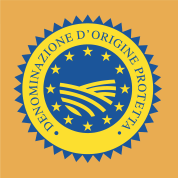
Gorgonzola cheese was lawfully recognized by the European Economic Community and registered in the list of the D.O.P. products on the 12th of June 1996 in compliance to the EEC Regulation n° 1107/96.
A very strict legislation determines the production standards, the D.O.P. area where the milk must be gathered and the ageing criteria, certifying the quality and the authenticity of the product.
Each and every cheese wheel is labeled with information about the cheese maker; in order to be sold as such, the Gorgonzola should be wrapped in aluminum papers displaying small embossed s printed all over the wrapping paper: without the trademark of the Consortium, it wouldn’t be Gorgonzola.
s printed all over the wrapping paper: without the trademark of the Consortium, it wouldn’t be Gorgonzola.
The board appointed and authorized from the Ministry of Agricultural, Food and Forestry Policies to supervise such requirements is the CSQA from Thiene.
A conformity assessment will be granted only to those cheeses matching the above mentioned requirements, allowing the marketing of the product under the name of D.O.P. “Gorgonzola”.
A very strict legislation determines the production standards, the D.O.P. area where the milk must be gathered and the ageing criteria, certifying the quality and the authenticity of the product.
Each and every cheese wheel is labeled with information about the cheese maker; in order to be sold as such, the Gorgonzola should be wrapped in aluminum papers displaying small embossed
 s printed all over the wrapping paper: without the trademark of the Consortium, it wouldn’t be Gorgonzola.
s printed all over the wrapping paper: without the trademark of the Consortium, it wouldn’t be Gorgonzola. The board appointed and authorized from the Ministry of Agricultural, Food and Forestry Policies to supervise such requirements is the CSQA from Thiene.
A conformity assessment will be granted only to those cheeses matching the above mentioned requirements, allowing the marketing of the product under the name of D.O.P. “Gorgonzola”.

